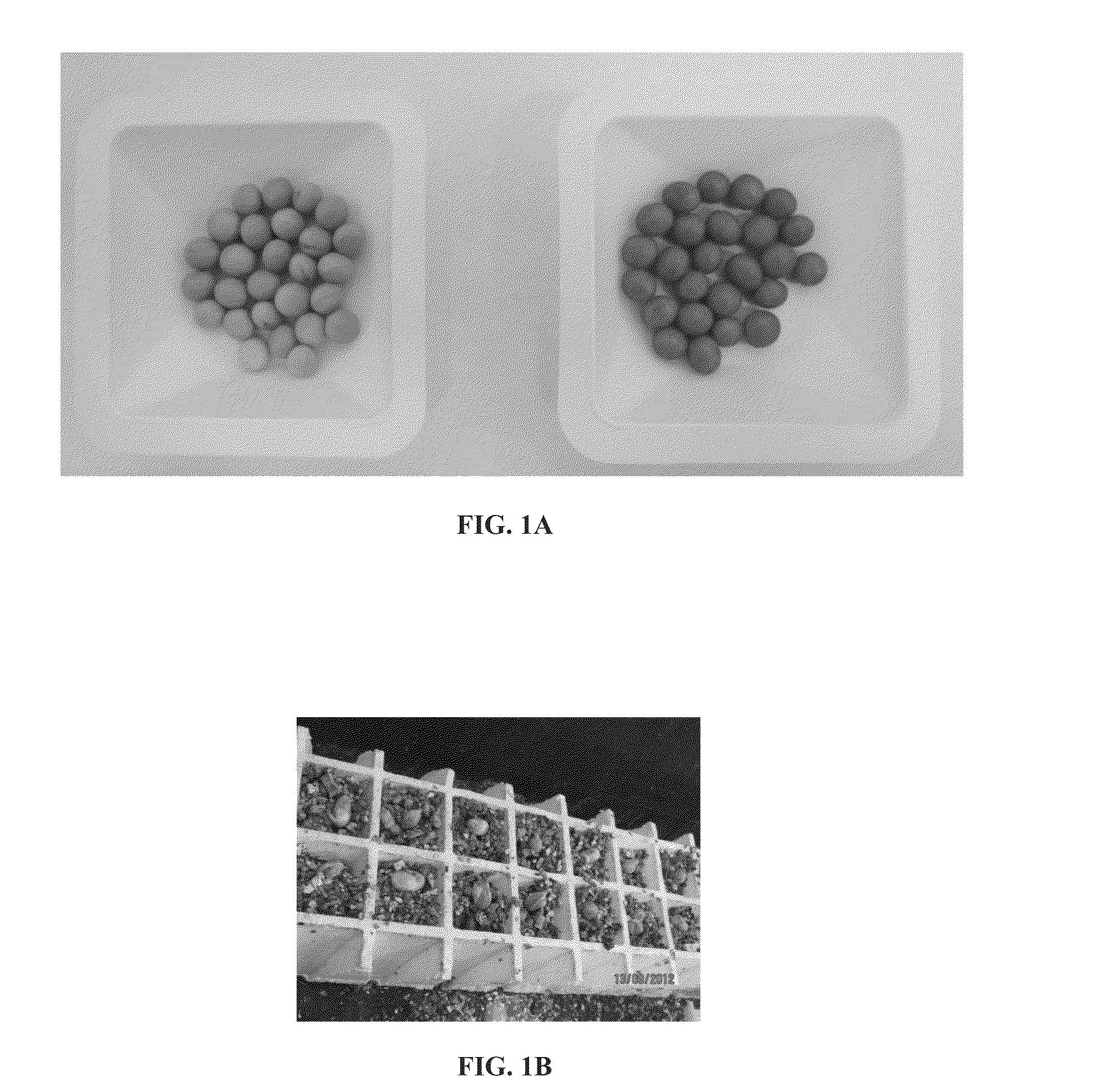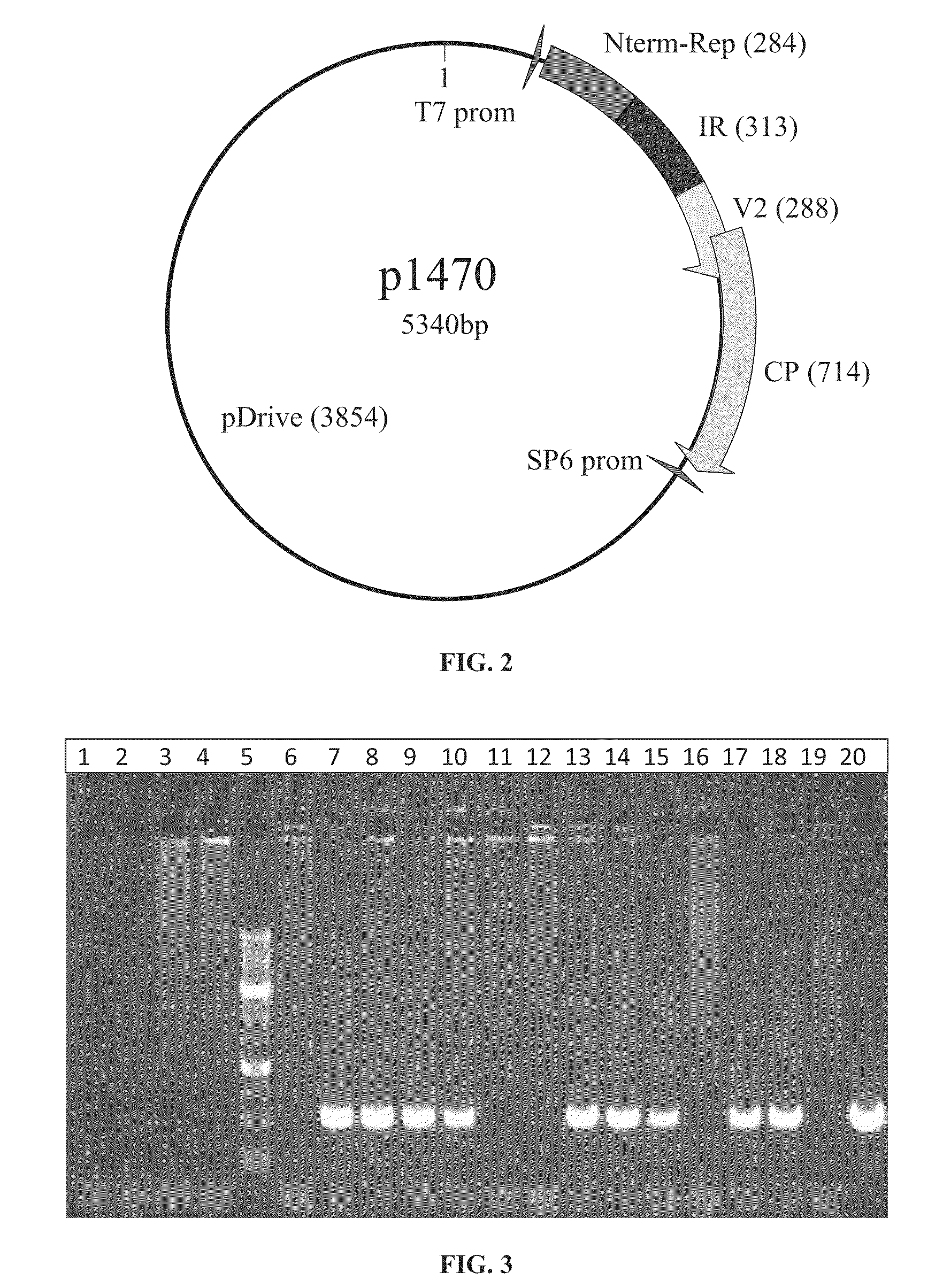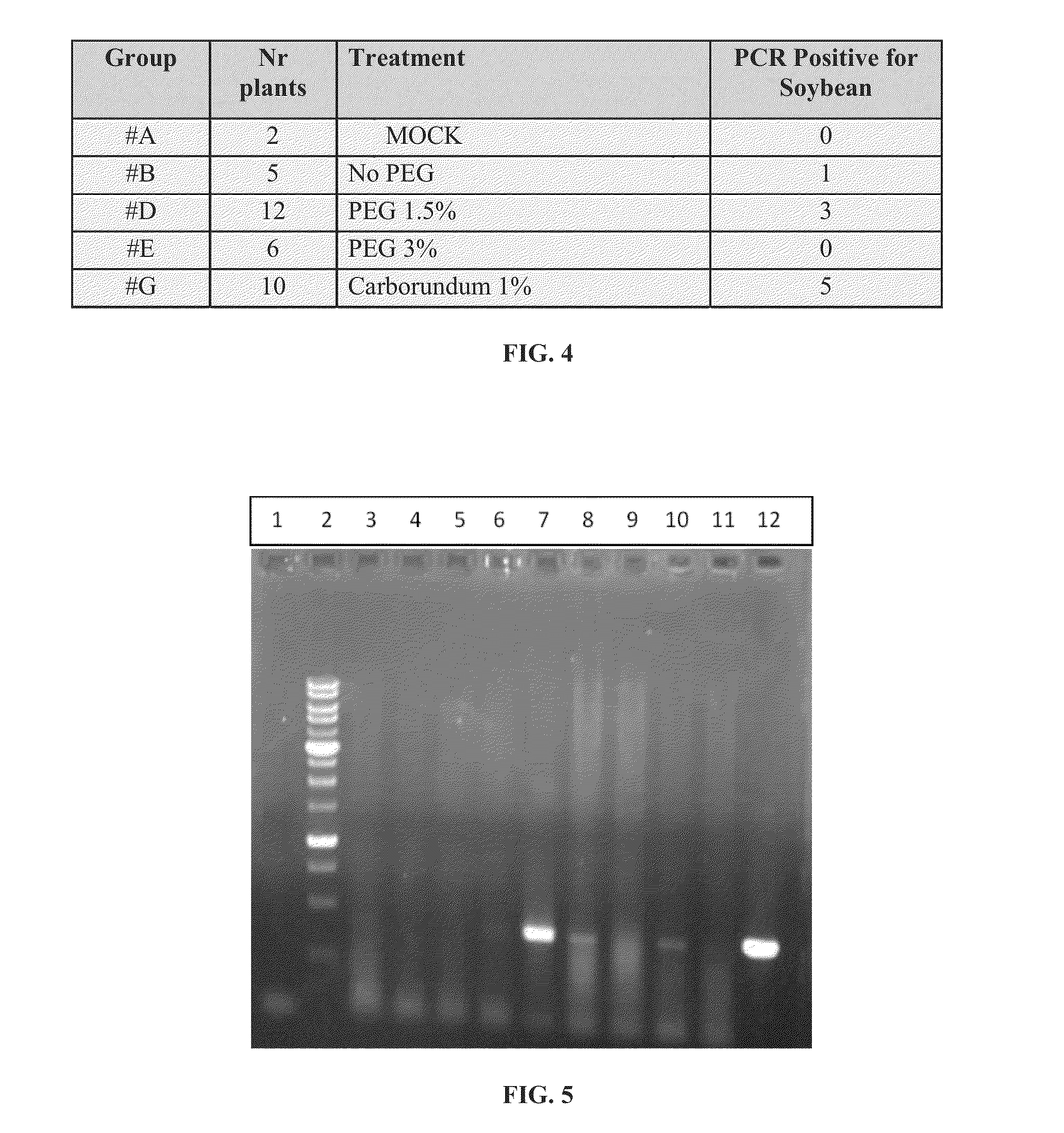Methods and compositions for the delivery of nucleic acids to seeds
a nucleic acid and seed technology, applied in the field of seed, can solve the problems of poor transformation efficiency, difficult and time-consuming transformation of some agriculturally important crop plants (e.g., sweet pepper), and serious genotype limitations, and achieve the effect of simple and efficient non-priming seed treatment methods
- Summary
- Abstract
- Description
- Claims
- Application Information
AI Technical Summary
Benefits of technology
Problems solved by technology
Method used
Image
Examples
example 1
Coating of Soybean Seeds without Foreign DNA
[0129]Soybean seeds were coated with various coating mediums listed below. Batches of 25 soybean seeds (10.5 g each) were mixed by vortexing with 0.3 mL of the coating medium, which is 3% seed weight, for 30 seconds and followed by air drying for 24 hours. The medium was composed of 70% tap water, 30% coating color with or without the addition of 1.5% polyethylene glycol (PEG), 3% PEG, or 1% carborundum.
[0130]The uniformity of the coating seed treatment was demonstrated by a uniform coverage of the red color on the seed (FIG. 1A, which represents the treatment with 1.5% PEG). The dried treated seeds were sowed on vermiculite and germination rates were recorded after 10 days (FIG. 1B). Untreated dried seeds of the same cultivar, same seed lot were used as control. The results reveal no difference in germination % between control seeds and seeds treated by the methods of the present invention.
example 2
Introducing Plasmid Vectors into Soybean Seeds Using a Coating Treatment
[0131]As described in Example 1, soybean seeds were coated with a coating medium composed of 70% tap water, 30% coating colors, and with the addition of 25 μg naked dsDNA plasmid of the viral-based vector p1470 to each batch (containing 25 seeds each). The plasmid construct, described in Patent Application under the name IR-V2-CP (Publication No. WO 2010 / 004561) is illustrated in FIG. 2. As a control serves seeds that were treated in the same procedure and with the same coating medium but without the addition of the DNA plasmid construct.
[0132]The treated seeds were germinated and nested PCR analysis was performed on DNA extracted from true leaves of 14 days old seedlings. The primers used were designed to amplify the fragment of TYLCV coat protein sequence in the p1470 (PCRI with primers A-B followed by PCRII with primers C-D).
Primer A (SEQ ID NO: 1): GCAGTCCGTTGAGGAAACTTACGPrimer B (SEQ ID NO: 2): CATACACTGGAT...
example 3
Introducing Plasmid Vectors into Soybean Seeds Using Modified Coating Treatments
[0134]Soybean seeds were coated with various coating mediums listed in Example 1: and also with 1.5% or 3% PEG, or with 1% carborundum.
[0135]The treated seeds were germinated and PCR analysis was performed on DNA extracted from true leaves of 12 days old seedlings. The primers used were the same as in Example 2.
[0136]Positive PCR reaction confirmed the introduction of the plasmid into the germinated seeds treated by the methods of the present invention (FIG. 4).
PUM
| Property | Measurement | Unit |
|---|---|---|
| Fraction | aaaaa | aaaaa |
| Fraction | aaaaa | aaaaa |
| Fraction | aaaaa | aaaaa |
Abstract
Description
Claims
Application Information
 Login to View More
Login to View More - R&D
- Intellectual Property
- Life Sciences
- Materials
- Tech Scout
- Unparalleled Data Quality
- Higher Quality Content
- 60% Fewer Hallucinations
Browse by: Latest US Patents, China's latest patents, Technical Efficacy Thesaurus, Application Domain, Technology Topic, Popular Technical Reports.
© 2025 PatSnap. All rights reserved.Legal|Privacy policy|Modern Slavery Act Transparency Statement|Sitemap|About US| Contact US: help@patsnap.com



